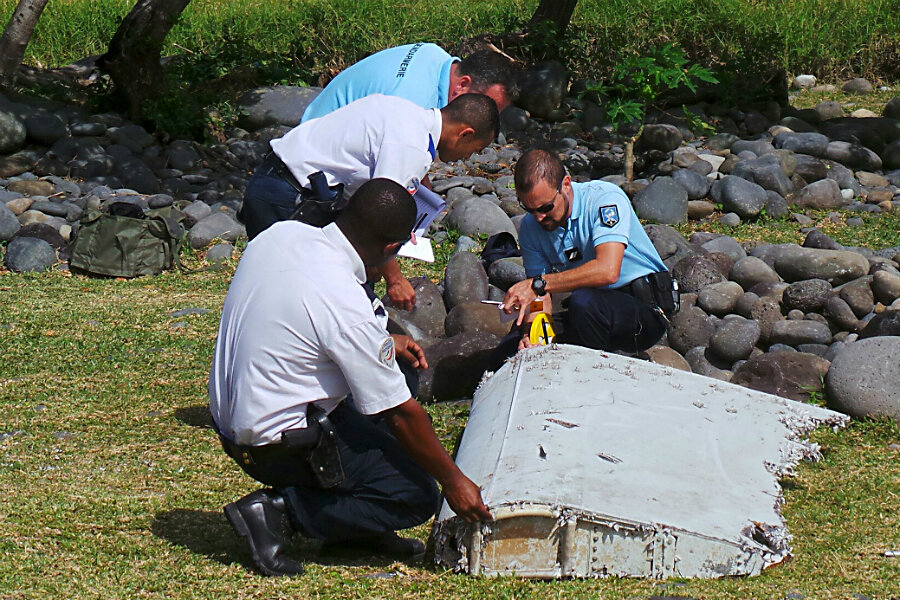France: Reunion Island debris from lost flight MH370
Loading...
The Paris Prosecutor's Office has confirmed that plane debris found in July on a remote Indian Ocean island was from Malaysia Airlines Flight MH370 which went missing last year.
“Investigators learned Thursday that a series of numbers found inside the plane flaperon matches with records, held by a Spanish company that manufactured portions of the component, linking the debris to MH370,” CNN reports.
The Malaysian government had last month said it believed that the wing part found on Reunion Island – a small, French island in the southern Indian Ocean – belonged to MH370, but French aviation experts had denied a positive identification without more detailed research.
The debris was found washed ashore 2,000 miles from the likely site of the crash.
"Today it is possible to state with certainty that the flaperon discovered on Reunion July 29, 2015 corresponds with that of Flight MH370," the prosecutor’s office said in a statement.
French investigators have been examining debris, since it was flown to an aeronautical research laboratory near Toulouse in France last month.
The discovery of the flaperon on French soil mandated that France conduct an investigation under rules of the International Civil Aviation Organization.
“Three magistrates – specializing in terrorism and aviation accidents – were designated to launch the current judicial inquiry into the wing part,” The Christian Science Monitor reported last month.
But as France’s independent judicial probe began, some feared that it could delay offering concrete answers for victims’ families.
“The French don’t have a vested interest in falsifying the findings or unnecessarily delaying the results, as the plane is not manufactured in France,” Francois Godement, a specialist in Asia and international relations and a professor at Sciences Po university in Paris, told the Monitor.
“It just so happens that the debris washed up on French soil and that Toulouse has one of the biggest and best aerospace testing centers in the world,” Mr. Godement said.
MH370 disappeared off the radar on March 8, 2014 during a flight from Kuala Lumpur, Malaysia, to Beijing, China with 239 people on board. No distress signals were sent out, and the last flight direction of the plane was unknown.
The last primary radar contact with the flight showed its position over the Andaman Sea about 230 miles northwest of the Malaysian city of Penang.
Searches for the plane proved fruitless and spanned thousands of square miles with resources from more than a dozen countries. Eventually, most searches were called off.







